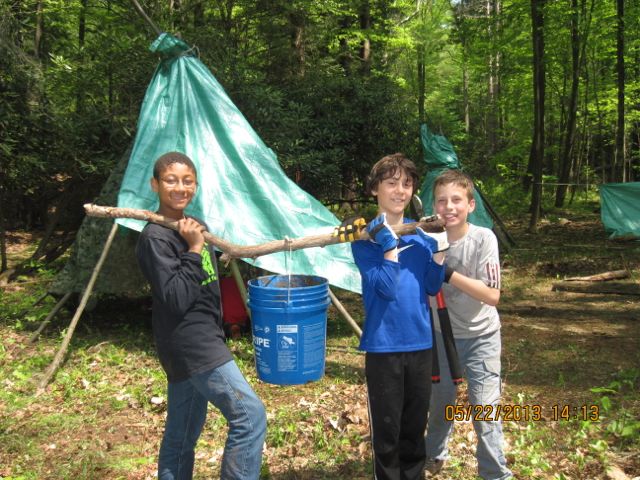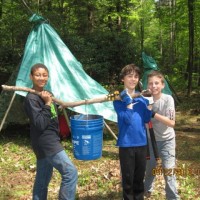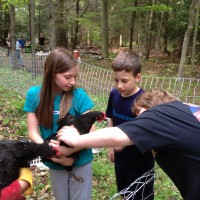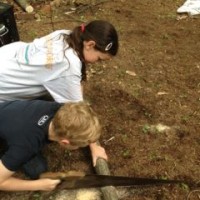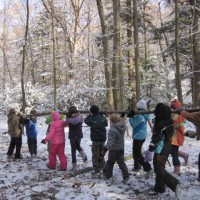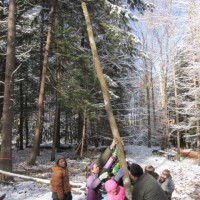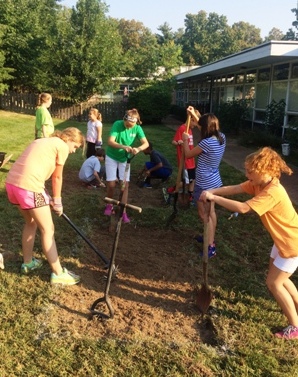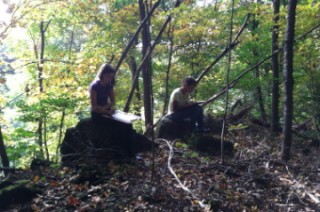Inspired by the work of John Hunter, 5th grade Valley School teacher, Tracy Courtney, undertook a new application for teaching U.S. colonization: the woods. Students deeply explored the academic side of this period of history, but core to the curriculum was the opportunity for students to experience the successes, failures and challenges that the colonists faced by settling their own piece of land on Valley School’s pristine 400 acre campus. Through all three seasons, the students spent time in the woods establishing the boundaries of their colonies, building structures and even building a government. When arguments about boundaries emerged, students solved them with the Rhododendron Treaty of 2014. When disagreements about materials settled in, students created colony positions, laws and even a monetary system. At each and every turn, students used what they had learned academically to navigate the challenges they faced in the woods.
In June, the colonists spruced up the settlement and welcomed parents, teachers and fellow students to an open house in the woods. They explained their successes and challenges, celebrated their structures and flags, and communicated all of this with outstanding public speaking. Throughout the year, students did regular writing reflections, traditional assessments and presentations that captured the curricular and co-curricular knowledge of the project.
These were the expected gains, but there were also some unexpected gains. First, the students had the opportunity to engage with a variety of teachers including not only the expected areas of technology, mathematics and art, but also the maintenance team. Second, it became clear to our teaching staff how important it is to capture the last piece of imaginative play that lives in the heart of a 5th grader. When they went to the woods, they were colonists. And this allowed them to experience life in the colonies in an authentic and imaginative way.
